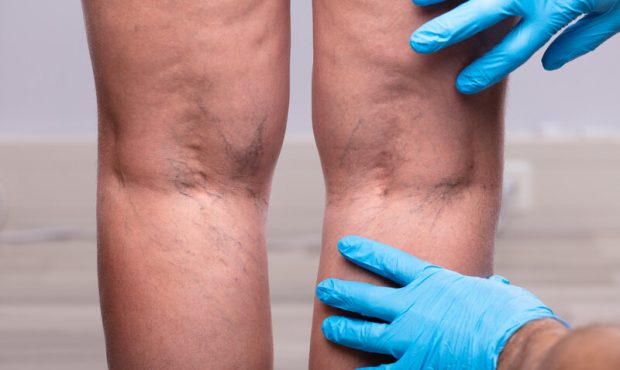Are you at risk for a blood clot? Learn the signs
Apr 2, 2020, 9:28 AM | Updated: Apr 14, 2020, 1:52 am

You’ve likely heard that, if you sit for work all day — even when working from home — it’s essential to get up and walk around. While movement has many benefits, one of the most crucial benefits is that simply moving your body could help you avoid a serious medical condition called deep vein thrombosis.
Deep vein thrombosis (or a DVT) occurs when a clump of blood cells, known as a blood clot, forms in one of your body’s deep veins. In most cases, blood clots form in a leg vein. Dr. Henry Tarlian, a Vascular Surgeon with Western Vascular Institute, cautions, “DVT can be life-threatening and requires medication to dissolve the clot and prevent it from traveling to the lungs.”
Every year, about one in every thousand people get deep vein thrombosis (according to the National Blood Clot Alliance). That means the average person has up to a 5% chance of developing DVT at some point in their life. However, several factors can significantly increase the risk of DVT.
Lifestyle factors
If you are a smoker or obese, you are at a higher risk for deep vein thrombosis. Additionally, anything that slows your blood flow makes it more likely you will form a blood clot, according to the Centers for Disease Control and Prevention.
Examples of things that may slow your blood flow include a job that involves sitting most of the day, regularly sitting with your legs crossed, or spending a lot of time on the couch relaxing at home. You may also be confined to bed after surgery, have limited movement because of an injury, or even be paralyzed. These are all situations, habits, or lifestyle choices that can increase the risk of DVT.
Taking birth control pills or being pregnant can also increase your chances of developing deep vein thrombosis. The elevated estrogen levels caused by pregnancy make the condition more likely from conception until three months after giving birth. In addition to the increased risk level associated with estrogen levels, pregnancy may also mean leading a more sedentary life than usual, which also increases the risk of DVT.
Age and genetics
Deep vein thrombosis is more common as you grow older with the risk of DVT increasing each year after age 50, according to the National Institutes of Health.
The issue also runs in families, so find out if your parents or siblings suffer from the condition.
“If a parent or sibling had DVT, you’re more at risk,” WebMD says. “If both your parents have been diagnosed, your chances may be even higher.”
Symptoms
While certain signs point to deep vein thrombosis, the CDC estimates that half of the people who develop the condition don’t show symptoms. However, if you notice pain, swelling, redness, or tenderness in your leg — or even your arm — it could be a sign of DVT.
If a blood clot travels to your lung, it can cause a pulmonary embolism, which could be fatal. According to the CDC, signs of a pulmonary embolism include a fast or irregular heartbeat, chest pain, difficulty breathing, low blood pressure, fainting, or coughing up blood.
Treatment
If you are at risk, exercise regularly to decrease the risk of DVT. Even gentle movement that gets you moving around can help. If you have any symptoms of deep vein thrombosis, speak to your doctor to discuss recommended medical treatments, such as anticoagulant therapy (blood thinners), thrombolysis (clot removal), or surgery.
Only an experienced Vascular Surgeon can recognize and prescribe treatment for deep vein thrombosis, so visit Western Vascular Institute for more information and to make an appointment.

